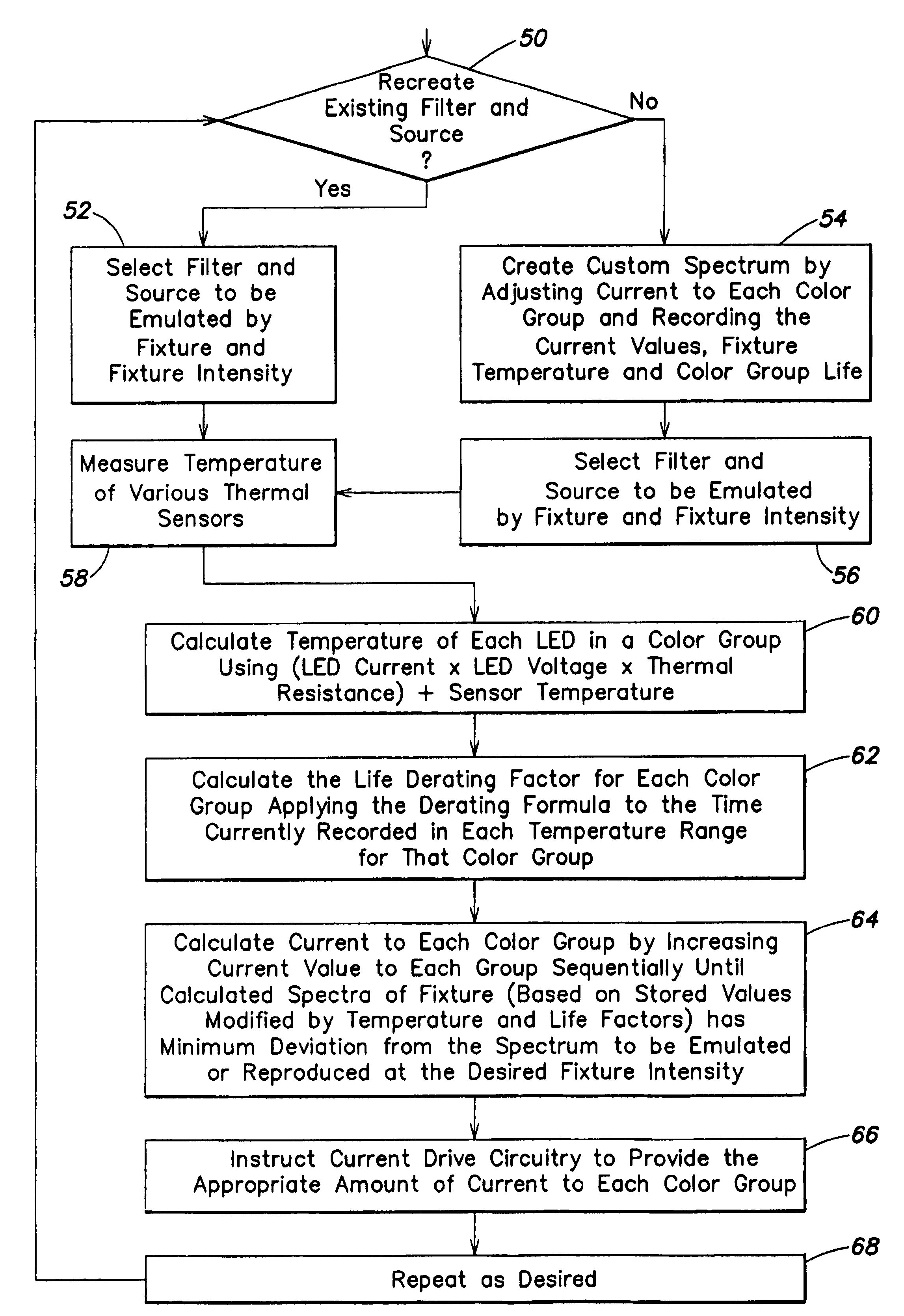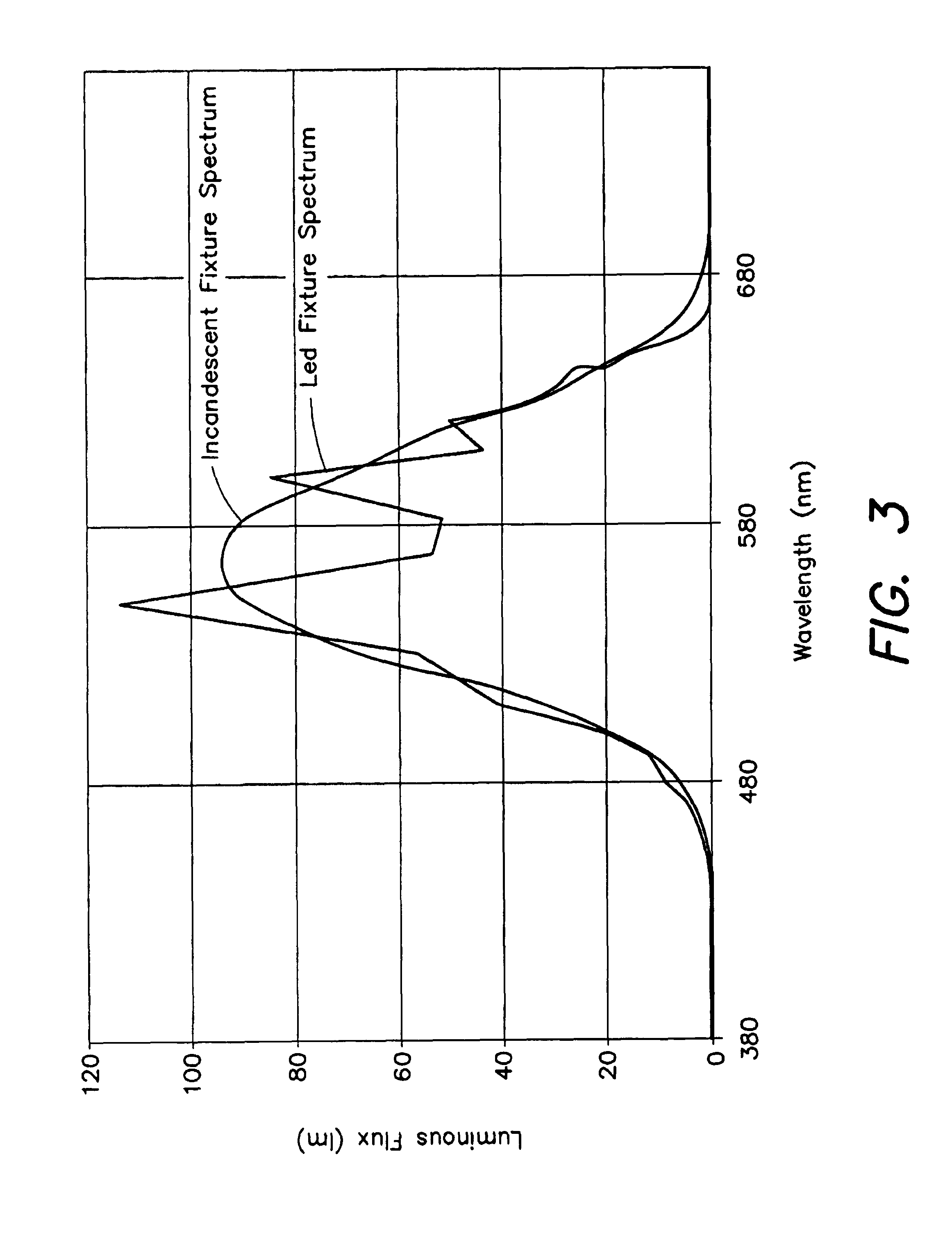Method for controlling the luminous flux spectrum of a lighting fixture
a technology of luminous flux spectrum and lighting fixture, which is applied in the field of lighting fixture luminous flux spectrum control, can solve the problems of inherently inefficient mechanism of absorbing non-selected wavelengths, limited lifetime of plastic color filters, and limited colors
- Summary
- Abstract
- Description
- Claims
- Application Information
AI Technical Summary
Benefits of technology
Problems solved by technology
Method used
Image
Examples
Embodiment Construction
[0030]With reference now to the illustrative drawings, and particularly to FIGS. 1 and 2, there is shown a lighting fixture 20 configured to project a beam of light having a selected luminous flux spectrum. The fixture includes an array of narrowband light emitters, e.g., light-emitting diodes (LEDs) 22, each configured to emit light in a narrowband color. A controller 24 supplies selected amounts of electrical power to the LEDs such that they cooperate to emit light having a prescribed composite luminous flux spectrum. The LEDs are mounted on a heat sink 26 within a housing 28. A collimating lens array 30, located immediately in front of the LED array, includes a separate lens component for each LED, for collecting the emitted light to produce a beam that is projected from the fixture, e.g., toward a theater stage (not shown).
[0031]The LEDs 22 are provided in a number of color groups, each group emitting light having a distinct narrowband color. One preferred fixture embodiment inc...
PUM
 Login to View More
Login to View More Abstract
Description
Claims
Application Information
 Login to View More
Login to View More - R&D
- Intellectual Property
- Life Sciences
- Materials
- Tech Scout
- Unparalleled Data Quality
- Higher Quality Content
- 60% Fewer Hallucinations
Browse by: Latest US Patents, China's latest patents, Technical Efficacy Thesaurus, Application Domain, Technology Topic, Popular Technical Reports.
© 2025 PatSnap. All rights reserved.Legal|Privacy policy|Modern Slavery Act Transparency Statement|Sitemap|About US| Contact US: help@patsnap.com



